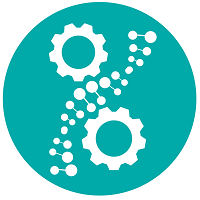Manufacturing & Analytical Characterization
Perspectives of the State of Continuous Manufacturing of Pharmaceuticals
Monday, October 21, 2024
9:30 AM - 10:00 AM MT
Location: 155 E

David Acevedo, PhD (he/him/his)
Senior Chemist
FDA
Laurel, Maryland
Speaker(s)
Purpose: A gradual but steady shift from batch to continuous manufacturing (CM) is being adopted by the pharmaceutical industry. The Food and Drug Administration (FDA) has supported the industrial implementation of CM by publishing relevant guidances and leading research initiatives in CM technologies. The use of process analytical technologies (PAT) has also been reported in literature to support CM operations alongside the development of modeling approaches used for process design and control. In this talk, perspectives on the state of CM technologies in the pharmaceutical sector will be presented from a regulatory point of view with an emphasis on manufacturing and facilities consideration.
Methods: The perspectives discussed in this presentation are based on the views of the author from extensive literature review and relevant guidances to CM of pharmaceuticals. Also, the examples and considerations discussed are based on research and regulatory expertise on CM.
Results: There are about 15 CM applications approved by the FDA since 2015. Control strategies utilized for the approved CM applications were commonly implemented with the use of soft sensors and/or PAT tools (e.g., mass balance, near-infrared, residence time distribution). Continuous direct compression was commonly implemented for the manufacture of solid oral drug products. The proposed manufacturing facilities were subjected to either site visits or pre-approval inspections based on product-specific risks and/or experience with the proposed technologies. The use of CM technologies has also been adopted and approved for the manufacture of small-molecule drug substances and biologics, demonstrating the evolution of the state of CM in the pharmaceutical sector.
Conclusions: CM offers numerous advantages to the pharmaceutical sector such as increasing flexibility in production capacity (e.g., public health emergency responses/drug shortages), reduced process footprint, sustainability via less material and chemical consumption, and improved product quality. Early engagement with the Agency is recommended to get the assistance via various channels (e.g., Emerging Technology Program) to discuss potential regulatory issues or concerns before filing an application.
Disclaimer: This abstract reflects the views of the authors and should not be construed to represent FDA’s views or policies.
Methods: The perspectives discussed in this presentation are based on the views of the author from extensive literature review and relevant guidances to CM of pharmaceuticals. Also, the examples and considerations discussed are based on research and regulatory expertise on CM.
Results: There are about 15 CM applications approved by the FDA since 2015. Control strategies utilized for the approved CM applications were commonly implemented with the use of soft sensors and/or PAT tools (e.g., mass balance, near-infrared, residence time distribution). Continuous direct compression was commonly implemented for the manufacture of solid oral drug products. The proposed manufacturing facilities were subjected to either site visits or pre-approval inspections based on product-specific risks and/or experience with the proposed technologies. The use of CM technologies has also been adopted and approved for the manufacture of small-molecule drug substances and biologics, demonstrating the evolution of the state of CM in the pharmaceutical sector.
Conclusions: CM offers numerous advantages to the pharmaceutical sector such as increasing flexibility in production capacity (e.g., public health emergency responses/drug shortages), reduced process footprint, sustainability via less material and chemical consumption, and improved product quality. Early engagement with the Agency is recommended to get the assistance via various channels (e.g., Emerging Technology Program) to discuss potential regulatory issues or concerns before filing an application.
Disclaimer: This abstract reflects the views of the authors and should not be construed to represent FDA’s views or policies.
Learning Objectives:
- Upon completion, participant will be able to discuss various regulatory guidelines and guidance's related to continuous manufacturing
- Upon completion, participant will be able to list general control strategies for continuous manufacturing
- Upon completion, participant will be able to list recommendations for filing continuous manufacturing applications

